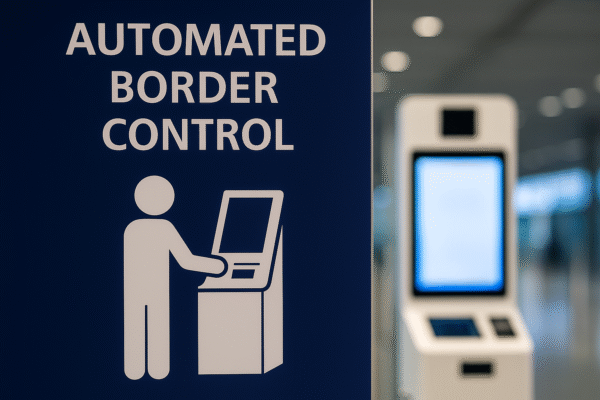Brussels, EU – The European Union is revolutionizing travel across the Schengen Area with the imminent launch of its biometric Entry/Exit System (EES) on 12 October 2025, replacing traditional passport stamps with a high-tech, automated border system. This move promises faster entry for travelers, increased prevention of visa overstays, and stronger countermeasures against identity fraud.
A Biometric Gateway: What Travelers Can Expect
For the first time, non‑EU visitors will undergo fingerprint scanning and facial recognition at automated kiosks upon entering or exiting the Schengen Area. This system, managed by eu‑LISA, will record key data including name, travel document, biometric identifiers, and entry/exit timestamps in real time.
The phased rollout will last six months, with full operation expected by 10 April 2026. During this transition, traditional passport stamping may continue at some crossings, but biometric verification will be increasingly prioritized.
Why It Matters: Streamlined Travel Meets Heightened Security
By automating border checks, the EU aims to reduce queue times, enhance data accuracy, and prevent overstayers from slipping through undetected. The digital logs will enable border authorities to monitor inconsistencies such as extended stays beyond the permitted 90 days within any 180-day period.
Furthermore, the system targets identity fraud, leveraging biometric verification to ensure that document holders match their physical presence, thereby significantly raising travel integrity standards.
Launch Details & Implementation Support
The EU Commission confirmed the official launch date of 12 October 2025, with countries given time to coordinate and prepare.
To ensure smooth adoption, a gradual, 180‑day roll‑out is planned. EU nations can proceed at their own pace within that window, mitigating risk at high-traffic hubs. By June 2025, countries like France and Germany confirmed readiness, while others such as Estonia and Lithuania opted for earlier full activation.
Transport operators in the UK are preparing too: Eurostar, Eurotunnel, and Port of Dover have upgraded facilities to handle pre‑departure biometric checks, aligning with their ongoing juxtaposed control agreements.
Broader Travel Landscape: ETIAS & UK ETA
EES will operate alongside the future European Travel Information and Authorisation System (ETIAS), a pre-travel screening platform similar to the US ESTA. Operational by late 2026, it will require €20 authorization valid for three years.
Likewise, the UK has developed its own Electronic Travel Authorization (ETA) for incoming travelers, at a £16 fee—further illustrating the shift to digital entry systems.
Implications for Tourism and Travel
For tourism professionals and travelers, EES signals both promise and adaptation:
- Efficiency Gains: Once fully operational, ETIAS and EES will alleviate bottlenecks, offering faster movement for frequent visitors.
- Fairness in Access: Travelers with clean travel records benefit from automated checks; repeat overstayers face digital red flags.
- New Infrastructure, New Challenges: In the short term, busier airports and maritime routes may experience delays as systems are tested and travelers adjust.
- Data‑Driven Insights: Tourism boards and policymakers can use anonymized EES data to analyze travel flows and adapt opening strategies.
Summary Table
| Feature | Description |
|---|---|
| Launch Date | Begins 12 October 2025, phased roll-out over 180 days, full ops by April 2026 |
| For Whom | Non‑EU/Schengen nationals on short stays (up to 90/180 rule) |
| Biometrics Used | Fingerprints and facial scans; children under 12 exempt from fingerprinting |
| Goals | Faster crossings, security reinforcement, regulation of overstays |
| Complementary Systems | ETIAS (from late 2026) and UK ETA systems |
| Not Covering | EU citizens, UK/EU residence permit holders, study or research visa holders |
| Travel Implications | May cause temporary delays, long term improves speed and oversight |
Final Thoughts
The EU’s Entry/Exit System marks a pivotal transformation in Schengen travel—ushering in a gesture-free, biometric age. While initial roll-out may cause adjustment for travelers, the end goal is a streamlined, secure journey across Europe.
As border technology evolves, tourism operators, travelers, and digital infrastructure stakeholders must stay informed and adapt to ensure seamless access—without sacrificing security or speed.
For more travel news like this, keep reading Global Travel Wire



















